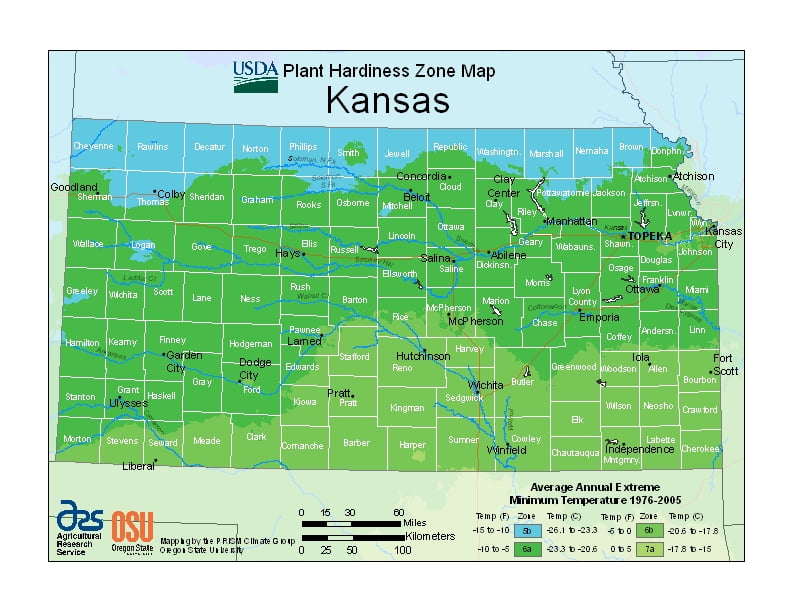
Kansas’s climate can be characterized in terms of three types: it has humid continental, semi-arid steppe, and humid subtropical, ranging from USDA Plant Hardiness Zones 4b through 6a. Temperatures can vary per different areas of the state so get to know which zone your city is located in so that you can address and avoid potential issues before they become problematic.
The USDA zones map is a useful system for determining what plants will survive and grow in certain areas of Kansas.
Understanding how these hardiness zones work means you can choose the right planting time, and optimize growing for your climate.
The eastern two-thirds of the state (especially the northeastern portion) has a humid continental climate, with cool to cold winters and hot, often humid summers.
Most of the precipitation falls during both the summer and the spring.
The western third of the state—from roughly the U.S. Route 83 corridor westward—has a semi-arid steppe climate.
Summers are hot, often very hot, and generally less humid.
Winters are highly changeable between warm and very cold.